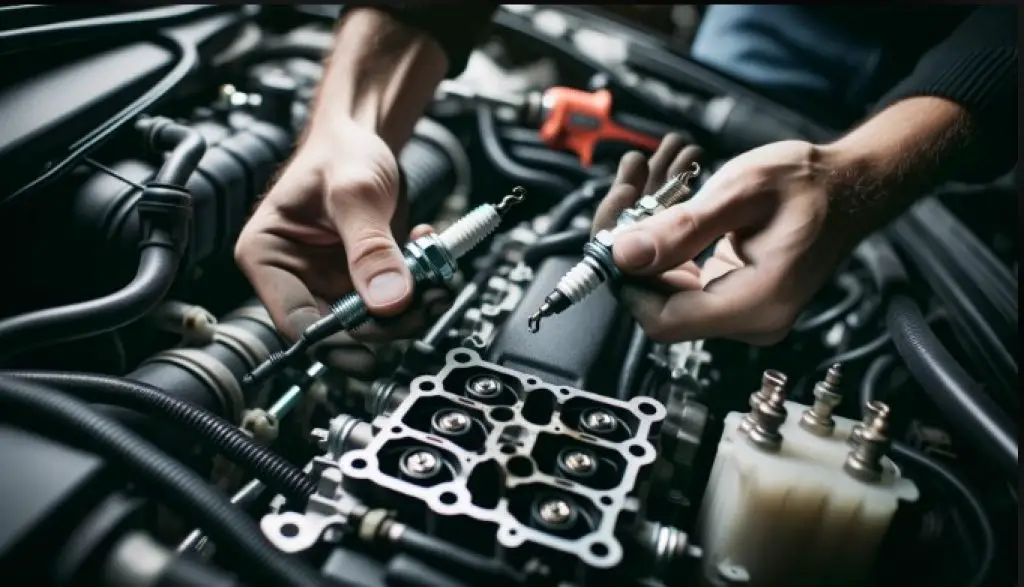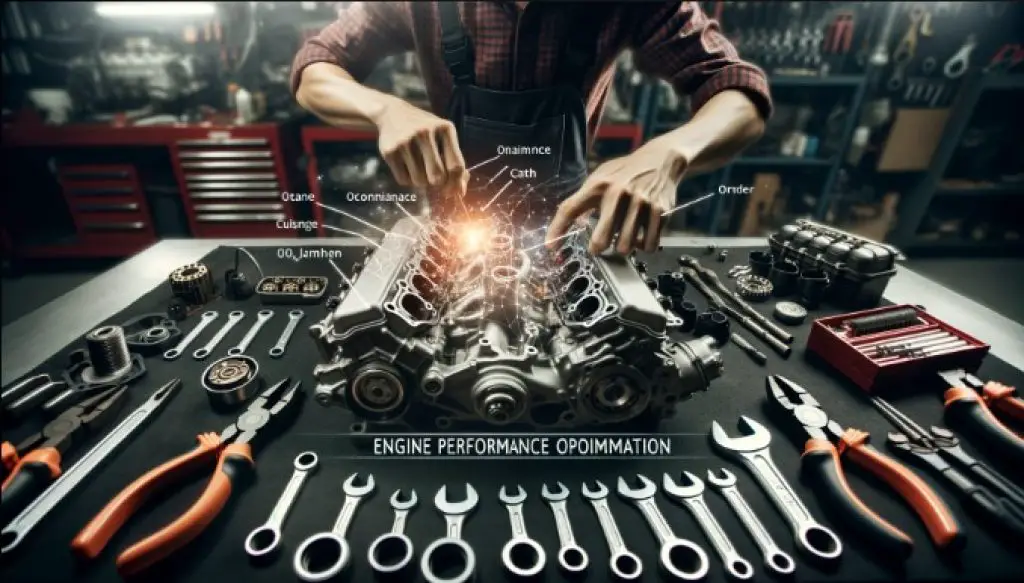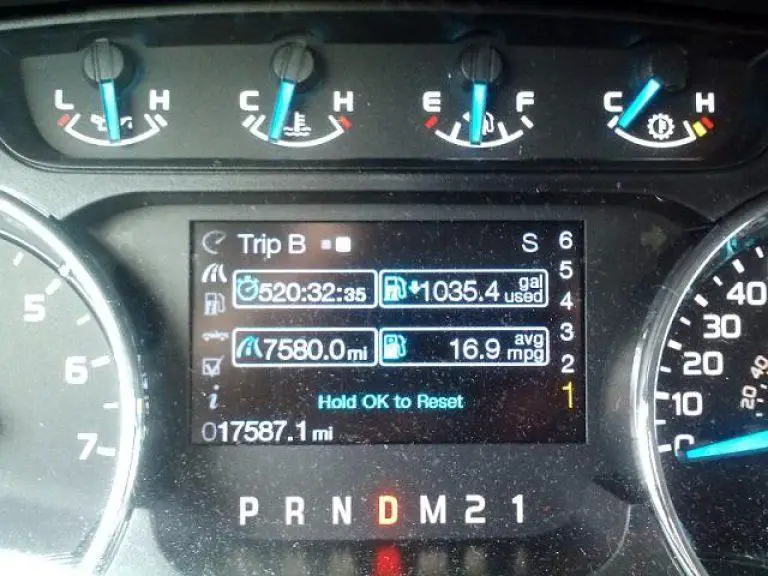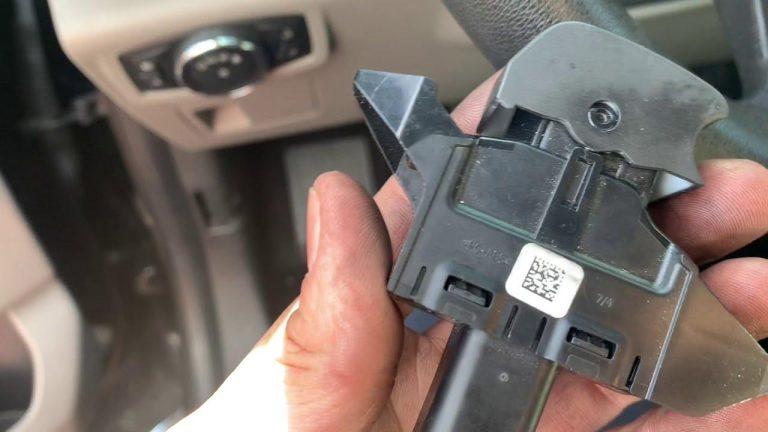1997 Ford F150 4.6 Firing Order
The firing order of a vehicle’s engine is the sequence in which the cylinders fire. It is an important factor in engine performance and longevity. The firing order of the 1997 Ford F150 4.6L V8 engine is 1-3-7-2-6-5-4-8.
If you are experiencing problems with your 1997 Ford F150 4.6L V8 engine, such as misfiring or poor performance, it is important to check the firing order.
You can find the firing order diagram on the engine itself or in your vehicle’s owner’s manual.
In this article, we will discuss everything you need to know about the firing order of the 1997 Ford F150 4.6L V8 engine, including:
- How to find the firing order of your engine
- How to troubleshoot a misfiring engine using the firing order
- How to replace spark plugs and ignition coils using the firing order
- Tips and Strategies to Enhance Engine Performance
By the end of this article, you will have a thorough understanding of the firing order of your 1997 Ford F150 4.6L V8 engine and how to keep it running smoothly.
How to Identify the Firing Order on Your 1997 Ford F150 4.6 Vehicle
Understanding the firing order of your 1997 Ford F150 4.6L V8 engine is crucial for diagnosing issues and maintaining peak performance.
This section will guide you through different methods to accurately determine the firing order for your vehicle.
Locating the Firing Order on the Engine Block
The engine block often holds key information about the firing order, stamped or etched directly on it.
- Pop the Hood: Open the hood to access the engine compartment.
- Locate the Engine Block: Usually, this is the large metal component at the center of the engine area.
- Search for Stamped Information: The firing order is often stamped or etched on the engine block or valve cover.
- Use a Flashlight: The numbers might be small or located in a hard-to-see area, making a flashlight handy for this task.
Finding Firing Order Information in the Owner’s Manual
Your owner’s manual contains a wealth of useful information, including the firing order.
- Locate the Manual: Typically found in the glove box.
- Consult the Index: Look for “Engine Specifications” or “Firing Order” in the index.
- Check the Information: The firing order will be listed in the relevant section.
You can also check out this video:
Troubleshooting Engine Misfires with Firing Order
Engine misfires can be both alarming and harmful to your vehicle, especially when they occur frequently.
A misfire means that one or more cylinders in your engine failed to fire correctly, which could lead to a variety of problems.
The firing order—particularly for specialized engines like the 1997 Ford F150 4.6L V8—plays a crucial role in diagnosing and resolving engine misfires.
Let’s delve into the importance of identifying misfiring cylinders, how the firing order can aid in diagnostics, and common reasons behind engine misfires.
Significance of Identifying Misfiring Cylinders
Understanding which cylinder is misfiring is the first step in resolving the issue. A misfiring cylinder can lead to loss of power, increased emissions, and even engine damage if not addressed promptly.
The Consequences of Ignoring Misfires
Ignoring misfires can result in:
- Reduced Fuel Efficiency: A misfiring cylinder burns fuel inefficiently.
- Increased Emissions: Harmful emissions can exceed permissible levels.
- Engine Damage: Persistent misfires can lead to other forms of engine damage.
Using Firing Order in Diagnosing Engine Issues
Knowing the firing order of your engine is vital for pinpointing which cylinder is misfiring. The firing order can guide you in connecting diagnostic tools or conducting manual inspections to identify the problem cylinder.
3 Steps to Use Firing Order for Diagnosis
- Access Diagnostic Trouble Codes (DTCs): A scan tool can provide codes that indicate which cylinder is misfiring.
- Cross-Reference with Firing Order: Use the firing order to locate the misfiring cylinder physically.
- Conduct Manual Inspections: Check the spark plugs and ignition coils corresponding to the misfiring cylinder in the firing order sequence.
Common Causes and Solutions for Engine Misfires
Engine misfires can be attributed to various factors. Knowing the common causes can expedite the troubleshooting process.
| Common Causes of Misfires | Symptoms | Potential Solutions |
|---|---|---|
| Spark Plug Issues | Rough idling, reduced power | Replace spark plugs |
| Ignition Coil Issues | Engine knock, low power | Replace ignition coils |
| Fuel Injector Issues | Poor RPM, reduced power | Clean/Replace injectors |
| Vacuum Leaks | Hissing sound, stalling | Seal the leak |
By following this guide, you should be better equipped to identify, understand, and fix engine misfires in your 1997 Ford F150 4.6L V8.
Knowing the firing order and the common causes of misfires will enable you to perform effective diagnostics and apply appropriate solutions.
Replacing Spark Plugs and Ignition Coils: A Step-by-Step Guide
The health of your 1997 Ford F150 4.6L V8 engine greatly depends on well-maintained spark plugs and ignition coils.
This guide provides a structured approach to replacing these components safely and effectively.

Necessary Tools and Materials
Before diving in, let’s ensure you have all the essentials.
| Tools Needed | Materials Needed | Purpose |
| Spark plug wrench | New spark plugs | For removing and installing spark plugs |
| Ignition coil socket | New ignition coils | For removing and installing ignition coils |
| Ratchet | Dielectric grease | General-purpose tool for various nuts and bolts |
| Torque wrench | For precise tightening |
Safe Removal and Installation Procedures
Safety and precision are crucial. Below is a table outlining the steps for safe removal and installation.
| Removal Steps | Installation Steps | Safety Tips |
|---|---|---|
| 1. Disconnect the Battery | 1. Grease the Spark Plugs | Always disconnect the battery first |
| 2. Access Spark Plugs & Coils | 2. Install New Spark Plugs | Work on a cool engine |
| 3. Unplug Ignition Coils | 3. Place New Coils | Use proper tools |
| 4. Remove Coils | 4. Secure Everything | Follow the firing order |
Ensuring Compliance with the Firing Order During Replacement
Adhering to your engine’s firing order is a non-negotiable step for optimal performance.
Warning: Incorrect firing order can lead to engine damage, including misfires.
Tips for Effective Replacement
A successful replacement involves more than just swapping parts. Here’s a table with additional tips:
| Tip Category | Recommendations | Check the Manual, Use the Torque Wrench |
|---|---|---|
| Proper Gapping of Spark Plugs | Verify Gap Size, Use Gap Tool | Ensures efficient combustion |
| Torque Specifications | Check Manual, Use Torque Wrench | Prevents over-tightening and under-tightening |
| Prevent Seizing | Apply Dielectric Grease | Eases future replacements |
By following this comprehensive guide, you’re not just replacing components—you’re ensuring the long-term health of your 1997 Ford F150 4.6L V8 engine.
Can the Coolant Leak Issue in a 2014 F150 Ecoboost be Similar to a Firing Order Problem in a 1997 Ford F150 4.6?
The f150 ecoboost coolant leak diagnosis and the firing order problem in a 1997 Ford F150 4.6 are separate issues. While the 2014 F150 Ecoboost may experience coolant leaks, it does not necessarily indicate a firing order problem similar to the 1997 model. Each vehicle has unique challenges and should be evaluated individually for their specific problems.
Do I Need to Reset the Throttle Position Sensor After Changing the Firing Order on My 1997 Ford F150 4.6?
After changing the firing order on your 1997 Ford F150 4.6 engine, it is crucial to follow the ford f150 throttle sensor reset procedure. This ensures that the throttle position sensor is calibrated correctly, allowing the engine to function properly. Neglecting this step may result in performance issues or rough idling.
Tips and Strategies to Enhance Engine Performance Through Firing Order Optimization
When it comes to engine performance, every detail matters. One often overlooked aspect is the firing order, which plays a crucial role in your vehicle’s power output, fuel efficiency, and emissions.
In this guide, we’ll delve into advanced strategies for firing order optimization to elevate your 1997 Ford F150 4.6L V8 engine’s performance to the next level.

Ensuring Accurate Installation of Spark Plugs and Coils According to Firing Order
Getting the firing order right is not just about avoiding misfires; it’s also about optimizing the engine’s overall performance. Here are some key considerations:
| Steps for Accurate Installation | Importance | Pro Tips |
|---|---|---|
| Double-check the firing order | Avoids misfires | Always refer to the owner’s manual |
| Use quality spark plugs | Ensures consistent firing | Opt for double-platinum or iridium spark plugs |
| Precise coil placement | Enables optimal spark delivery | Always replace coils in pairs |
Maintaining Proper Spark Plug Gaps and Ignition Coil Specifications
Proper gaps and specifications are not just details; they are critical factors in optimizing performance.
| Factors to Check | Ideal Specifications | Why It Matters |
|---|---|---|
| Spark Plug Gaps | 0.054 inches | Ensures complete combustion |
| Ignition Coil Voltage | Consult owner’s manual | Affects the spark’s ability to ignite the air-fuel mixture |
Utilizing High-Quality Engine Oil and Ensuring Regular Maintenance
The kind of engine oil you use and how often you maintain your vehicle can also impact your engine’s performance.
| Engine Oil Types | Best Practices | Maintenance Frequency |
|---|---|---|
| Synthetic Oil | Ideal for high-performance | Check every 5,000 miles |
| Mineral Oil | Suitable for older engines | Check every 3,000 miles |
Employing Regular Checkups and Maintenance for Optimal Performance
Regular checkups are your best defense against future performance issues.
| Checkup Components | Why It’s Important | Recommended Frequency |
|---|---|---|
| Air Filters | Improves air intake | Every 15,000 to 30,000 miles |
| Fuel Filters | Protects the fuel injectors | Every 20,000 to 40,000 miles |
By following these advanced strategies, you can make sure your engine not only performs well but also stays in peak condition for years to come.
Related Article: 5.4 Triton Ford F150 Coil Pack Diagram
What Are the Ignition Coil Resistance Specifications for a 1997 Ford F150 4.6?
The ford ignition coil resistance specs for a 1997 Ford F150 4.6 are crucial in ensuring proper ignition performance. The primary coil should have a resistance between 0.3 and 1.0 ohms, while the secondary coil should range from 6,000 to 10,000 ohms. These specifications guarantee efficient power delivery and reliable operation for the vehicle.
FAQs
Where is Cylinder 1 on a 4.6 V8 Ford?
Cylinder 1 on a 4.6 V8 Ford is located on the passenger side (right) at the front.
What’s the Firing Order for a Ford F150?
The firing order for a Ford F150 with a 4.6L V8 engine is 1-3-7-2-6-5-4-8.
What is a Coil Pack on a Ford F150?
A coil pack is an ignition component that contains a group of electronically controlled ignition coils.
How Do You Change Spark Plugs on a 1997 Ford F150?
To change spark plugs on a 1997 Ford F150: disconnect the battery, remove ignition coil packs, remove old spark plugs, gap new plugs, install new plugs, reinstall coil packs, and reconnect the battery.







